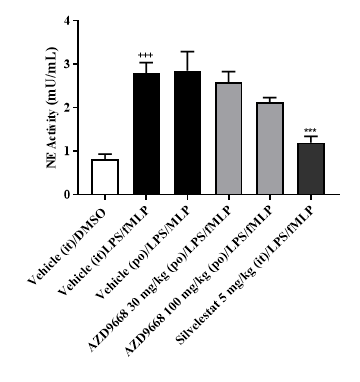COPD: LPS + fMLP PK/PD model – Neutrophil Elastase Targets
Neutrophil Elastase play an important role in the development of chronic obstructive pulmonary disease (COPD), resulting in extensive tissue damage and malfunctioning of the airways.
Intratracheal administration of fMLP degranulates neutrophils in the lung tissue induced by the LPS challenge to release neutrophil elastase into the airways.

Administration of fMLP in a model of LPS results in higher HNE activity, this is reversed by administration of the positive control Sivelestat (human neutrophil elastase inhibitor)
| Study Design | |
|---|---|
| Species/Strain | SD rat, C57BL/6J mouse |
| Model | LPS + fMLP PK/PD model |
| Relevant Use | Assessing the efficacy of novel compounds targeted at neutrophil elastase |
| Readouts Available | HNE activity, BAL differential cell count, and BAL cytokines |
Study data generated by Labcorp Huntingdon Pharmacology.
Related Models
-
Bhas 42 Cell Transformation Assay (CTA)
Carcinogenicity, Discovery, Toxicology -
Asthma: Ovalbumin sensitization and challenge
Discovery -
Chlorine Induced Lung Injury
Discovery -
COPD: LPS + fMLP PK/PD model – Neutrophil Elastase Targets
Discovery -
COPD: Human Neutrophil Elastase Lung Hemorrhage Model
Discovery -
Bronchoconstriction models for LABA, LAMA & MABAs
Discovery -
Flu Model: H1N1 influenza lung infection model – viral COPD exacerbation
Discovery -
Model of Allergic Bronchopulmonary Aspergillosis (ABPA) in Mice
Discovery
